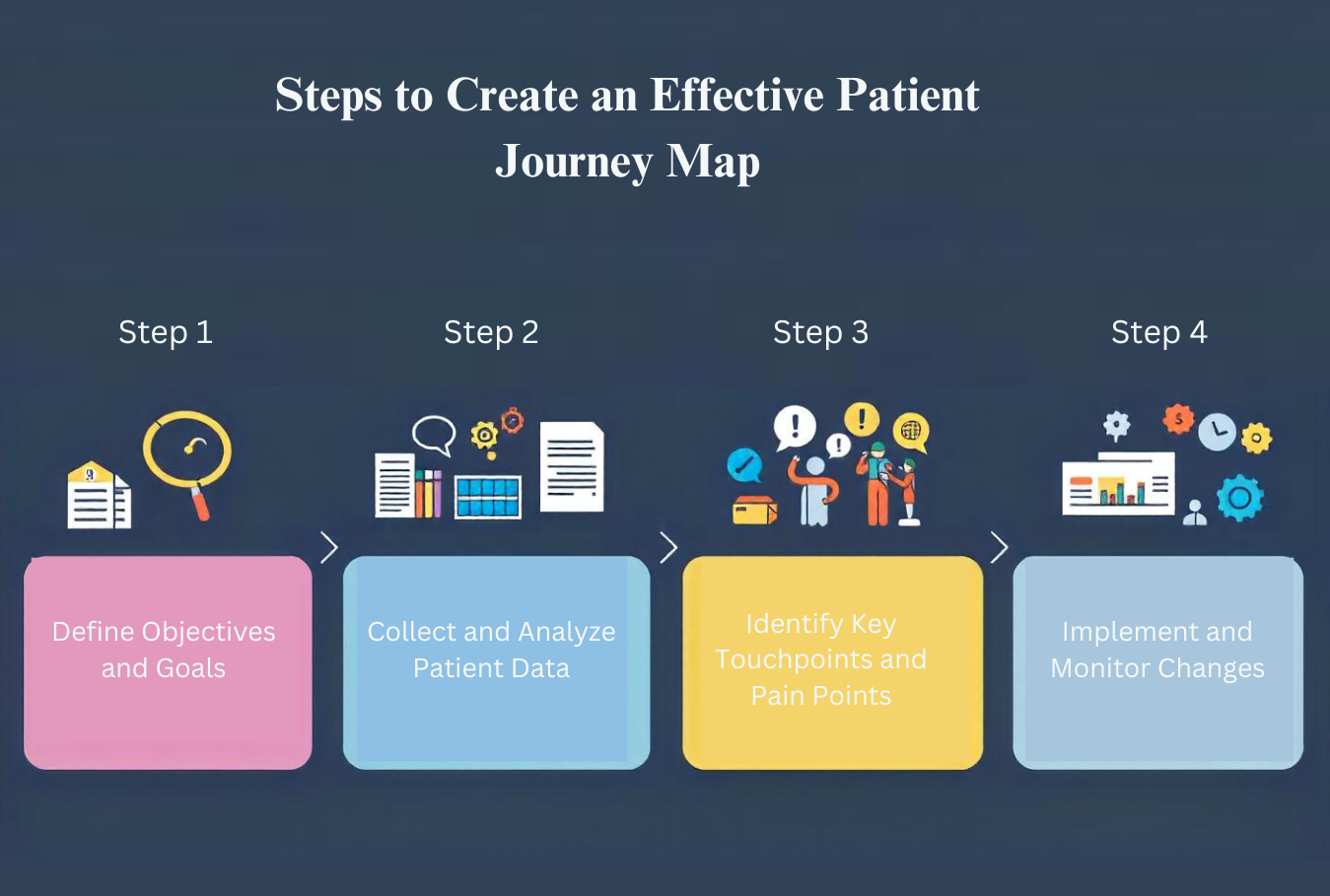Patient journey mapping is a powerful technique that helps us understand the entire experience a patient goes through, from the first symptoms to the completion of treatment. By mapping out this journey, healthcare professionals can identify key touchpoints, pain points, and emotions that shape the patient's experience. This knowledge can then be used to create more patient-centric strategies, improve communication, and ultimately enhance the effectiveness of healthcare services.
What is Patient Journey Mapping?
Patient journey mapping is a method used to visualize and understand the steps a patient takes throughout their healthcare experience. It provides a detailed overview of every interaction a patient has with healthcare providers, from initial awareness of symptoms to post-treatment follow-ups.

Why It Matters in Pharma and Life Sciences:
- Data-Driven Insights: By mapping the patient journey, you can uncover critical insights that drive more effective pharma market research and data analysis.
- Optimized Treatment Pathways: Understand where patients encounter barriers, and use this knowledge to streamline the treatment process, improving outcomes.
- Patient-Centric Innovation: Inform drug development and marketing strategies with a deep understanding of patient needs, leading to more targeted and successful pharma brand launches.
Key Components of a Patient Journey Map
- Touchpoints: These are the moments where patients interact with healthcare systems, such as visiting a doctor, engaging in doctor-patient dialogue, receiving a diagnosis, or filling a prescription.
- Pain Points: Challenges or frustrations patients experience during their journey, such as delays in diagnosis or difficulty accessing care.
- Emotional Journey: The emotional states of patients at different stages, from anxiety during diagnosis to relief after successful treatment.
The Role of Patient Journey Mapping in Pharma and Life Sciences
Patient journey mapping is instrumental in guiding the development of new therapies and optimizing existing ones.
- Targeted Therapies: By identifying unmet needs and challenges within the patient journey in healthcare, you can develop therapies that more precisely address these issues.
- Improved Market Fit: Insights from patient journey maps help ensure that your treatments align with patient expectations and are more likely to be adopted in the market.
Enhancing Patient-Centric Strategies
- Better Engagement: Develop communication strategies that engage patients at the right time, with the right message, leading to better adherence and outcomes.
- Informed Decision-Making: Use patient journey insights to inform decisions across the product lifecycle, from clinical trials to post-market surveillance.
Steps to Create an Effective Patient Journey Map
Creating a patient journey map involves a systematic approach that leverages both qualitative and quantitative data.

Step 1: Define Objectives and Goals
- Ensure that the mapping exercise aligns with broader business goals, such as improving patient outcomes, enhancing market share, or optimizing clinical trial design.
- Establish KPIs to measure the success of your patient journey mapping, such as patient satisfaction scores, adherence rates, or time-to-diagnosis improvements.
Step 2: Collect and Analyze Patient Data
- Qualitative Data: Conduct in-depth interviews, focus groups, and patient forums to gather rich, narrative data on patient experiences.
- Quantitative Data: Utilize surveys, EHRs, and claims data to capture measurable aspects of the patient journey, such as frequency of healthcare visits, treatment adherence, and outcomes.
- Advanced Analytics: Apply AI and machine learning to identify patterns and trends within your data, enabling more precise mapping and prediction of patient behaviors.
Step 3: Identify Key Touchpoints and Pain Points
- Identify major interactions within the healthcare system, such as initial diagnosis, therapy initiation, and follow-up appointments.
- Look for barriers or challenges, such as long waiting times, complex treatment regimens, or adverse drug reactions, that hinder the patient experience.
Step 4: Implement and Monitor Changes
- Use the insights from the journey map to inform strategic decisions, whether it’s refining a drug’s positioning, improving patient support programs, or optimizing clinical trial design.
- Regularly update the patient journey map as new data becomes available and patient behaviors evolve. This ensures that your strategies remain relevant and effective.
Challenges and Best Practices in Patient Journey Mapping
Here are some challenges to be aware of:
- Data Integration: Integrating data from multiple sources (e.g., EHRs, patient surveys, and CRM systems) can be difficult but is essential for a comprehensive map.
- Regulatory Compliance: Navigating regulations such as GDPR and HIPAA while collecting and analyzing patient data requires careful planning and execution.
- Cross-Functional Collaboration: Ensuring collaboration across departments, from clinical teams to marketing, is crucial for a holistic patient journey map.
The Future of Patient Journey Mapping
The landscape of patient journey mapping is rapidly evolving, driven by technological advancements and a growing emphasis on personalized medicine.
- AI-Driven Insights: The use of AI and machine learning is transforming patient journey mapping, enabling more accurate predictions and real-time adjustments to strategies.
- Personalized Patient Journeys: There is a growing trend towards creating personalized journey maps that cater to the unique needs and experiences of individual patient segments.
To overcome these challenges, consider the following best practices:
- Holistic Data Collection: Ensure that your data collection strategy is comprehensive, covering both quantitative metrics and qualitative insights.
- Patient-Centric Approach: Always prioritize the patient’s perspective in your journey map, ensuring that the strategies developed truly meet patient needs.
- Regulatory Awareness: Stay up-to-date with the latest regulatory requirements to ensure compliance in data collection and analysis.
Predictive Patient Journey Mapping
Predictive analytics is increasingly being integrated into patient journey mapping, offering a proactive approach to patient care.
- Forecasting Patient Needs: By predicting potential challenges and patient needs, companies can proactively address issues, leading to improved patient outcomes and treatment adherence.
- Enhancing Product Development: Predictive insights can guide the development of therapies that better align with patient journeys, reducing time to market and increasing the likelihood of commercial success.
By understanding the complete patient experience, from diagnosis to long-term outcomes, you can create more effective, patient-centric solutions that drive better outcomes and market success.
Ready to enhance your patient-centric strategies?
Contact ZoomRx today to learn how our expert insights and data-driven solutions can help you optimize your patient journey mapping efforts and achieve your business objectives.
Get in touch with us for more information.


